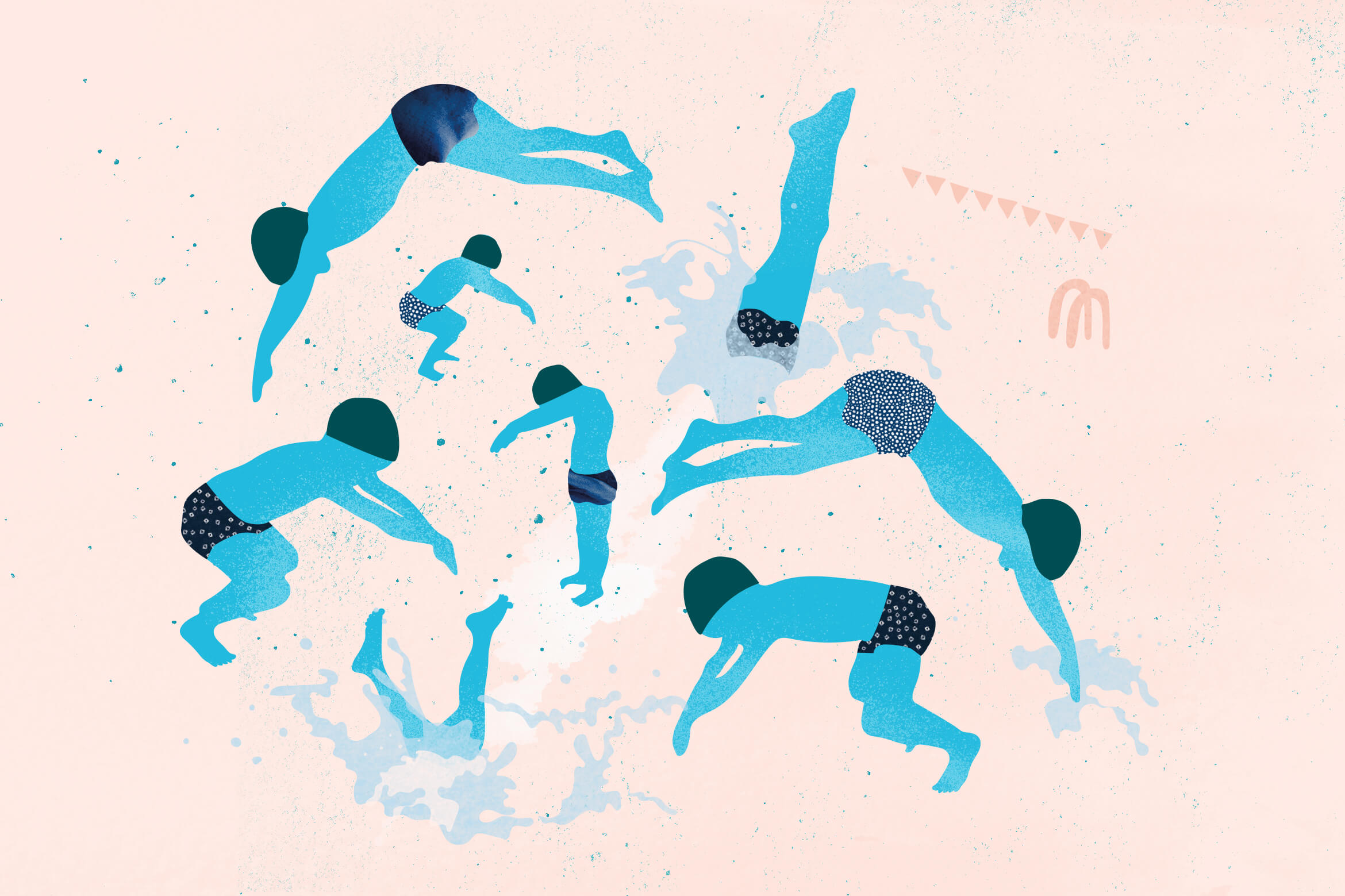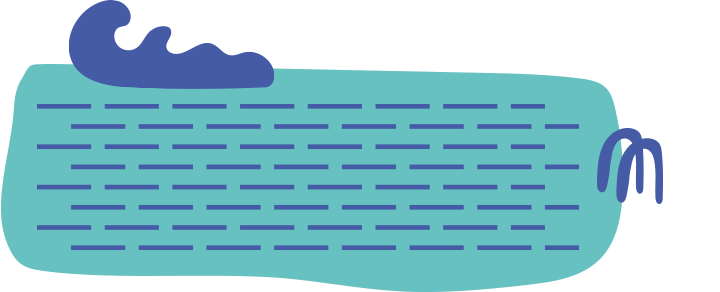As I was sitting in an auditorium in Brisbane last year, I was struck by this revelation from speaker, Karen Baildon of Superfish Swim Schools on the Gold Coast. At one half-hour lesson per week, over four terms, kids are spending just twenty hours a year learning to swim. Until this moment, I hadn't considered how little time there is. With only twenty hours spaced out over a year, it hit me. How incredible our kids are at what they accomplish with their swimming practice in this time.
With twenty hours etched in my mind I later came across Josh Kaufman's TED talk and then book 'The First 20 Hours: How to Learn Anything… Fast!'. Unfamiliar with Kaufman? He's the bestselling author of books on business, skill acquisition, creativity and applied psychology, including 'The Personal MBA'. He talks about how recent studies tell us it takes 10,000 hours to master a skill. He believes this thinking discourages us from learning. It takes 10,000 hours – equal to a full-time job for five years – for an elite professional to MASTER a skill.
Unfortunately though, '10,000 hours' has filtered down, into our psyche as the mistaken idea that it takes 10,000 hours to LEARN something. So, Kaufman set out to dispel this thinking. He wanted to know how long it took for anyone to learn a new skill, and be reasonably good at it. It turns out, it takes twenty hours, as he so cleverly reveals at the end of his TED talk.
His book reaffirms a lot of what we already know by osmosis. Many of the things we do in our lessons, are confirmed by the methods and teachings in his book.
Kaufman encourages a productive approach to learning and tells us, there's a way to practice intelligently and efficiently. There are four things we need to do.
1. Remove the barriers to practice, the distractions that will get in the way.
His first piece of advice is to remove distractions. "The more time you have to devote each day, the less total time it will take to acquire new skills. I recommend making time for at least ninety minutes of practice each day by cutting low-value activities as much as possible."
Whilst we don't have this kind of time, we can ensure our half-hour lesson creates an atmosphere for high-value learning, with limited distraction. We aim for what we call 'Maximum Practice Time', where children are learning throughout the whole lesson – not just for ten minutes of the lesson, waiting for other kids to have their turns. Sure, there's inevitably moments where there's breakdowns, but we're always aiming for 100% engagement. The water can be a disruptive environment, so our learn to swim classes, Tails, is deliberately a maximum of two kids per class, instead of the standard 3-4. The difference between two and three kids in a class is the difference between a pool and the ocean! In bigger classes you encounter more emotions and fears. This makes it more difficult for kids to be engaged in a high-value swimming practice, where those first twenty hours are so important.
2. Deconstruct the skill into smaller pieces, repeating one thing, until you’ve got it.
Kaufman goes on to say "...Most of the things we think of as skills are actually bundles of smaller sub-skills. Once you've identified a skill to focus on, the next step is to deconstruct it – to break it down into the smallest possible parts... By focusing on the critical sub-skills first, you'll make more progress with less effort."
In our lessons, we slow things down so it’s easier to grasp and master the skill of swimming. We are not one to teach everything overwhelmingly all at once. Hello, recipe for a stressed and fearful little learner right there! Instead, we take a relaxed and safe approach. We're thinking about the long-term impacts of teaching kids to swim. How we can best set them up to build confidence and achieve, with foundational, deconstructed 'sub-skills'.
3. Self-correct or self-edit as you practice using resources to guide you.
Kaufman also writes, "...Fast feedback naturally leads to rapid skill acquisition. If feedback arrives immediately, or with a very short delay, it's much easier to connect that information to your actions and name the appropriate adjustments."
In our stroke development classes, Fins, we have kids swim shorter distances. We prioritise these over swimming laps and laps, so that we can focus on correcting the child's technique, giving them more feedback, and allowing them to self-correct more quickly.
4. Commit to practicing for at least twenty hours. Stick with it, and you’ll overcome that initial frustration barrier.
In an ideal world, Kaufman tell us "...The most well-known general method of rapid skill acquisition is immersion: completely changing your environment is a way that results in constant deliberate practice. If you want to learn to speak French, for example, learning through immersion would involve living in France for a few weeks or months."
Well, we can't all live like a mermaid for a few months. But we do see this in kids who immerse themselves in a 4-5 day holiday intensive, or increase their lessons to two per week. We see them enjoy it more and have more fun.
Kids want to be good at something. If they're struggling, chances are, you'll hear things like "I'm so bored" or "I don't like it". These reactions are surface-level to what's going on, on a deeper level – that they find it difficult. And being in that frustrating barrier when you're learning a new skill, can be miserable. I'm sure you've picked up a pencil, guitar or surfboard at some point and have wanted to give up. It's hard work. With increased swimming practice, we see children starting to see results more rapidly. Their confidence and enjoyment arrives more quickly. It seems that hastening the process may be the answer to them getting over this difficult period.
The more you practice, the more efficient, effective, and automatic the skill becomes.
This is one of my favourite quotes from the book. As adults, sometimes we forget the obvious. From the outside, it may look like kids aren't progressing quickly if they're not doing laps as soon as possible. We forget how hard it is to pick up a new skill, and how when we break things down and repeat them until we've got a handle on them, that this is more efficient and easeful. It's a good reminder for those of us in the pool teaching, that repetition and deliberate practice are so valuable in helping kids succeed. That we have to help them push through resistance to get that breakthrough. Right now I'm learning to play jazz piano for the fifth time. It can be incredibly monotonous playing scales and chords over and over again. The flip-side of practising these means I have more freedom when I want to play. It's easy to forget that it takes courage, overcoming fears, repetition and time to develop a new skill and have fun with it.
As the cold months are here, this book has left me wondering...
How can we ensure these precious twenty hours are most effective?
In the summertime it's easier to immerse kids in swimming, adding high-value experiences at the beach to their progress. But in winter, it's another story.
Kaufman writes, "...Skill is the result of deliberate, consistent practice, and in early-stage practice, quantity and speed trump absolute quality. The faster and more often you practice, the more rapidly you'll acquire the skill."
Is this then the best case for staying the course of swimming lessons in cold weather? Kids lose their momentum, muscle-memory and forget their skills if they take an extended break. A week was an eternity when I was a kid. (Notice how it speeds up every year we get a little older?! ?) Should we instead, counteract the inability to go outside with heading to indoor pools? Even increase the frequency of lessons, so there's a similar amount of exposure to the summer months spent outside?
Perhaps now is the time to lean in?
See you in the water! x Sasha



No comments.